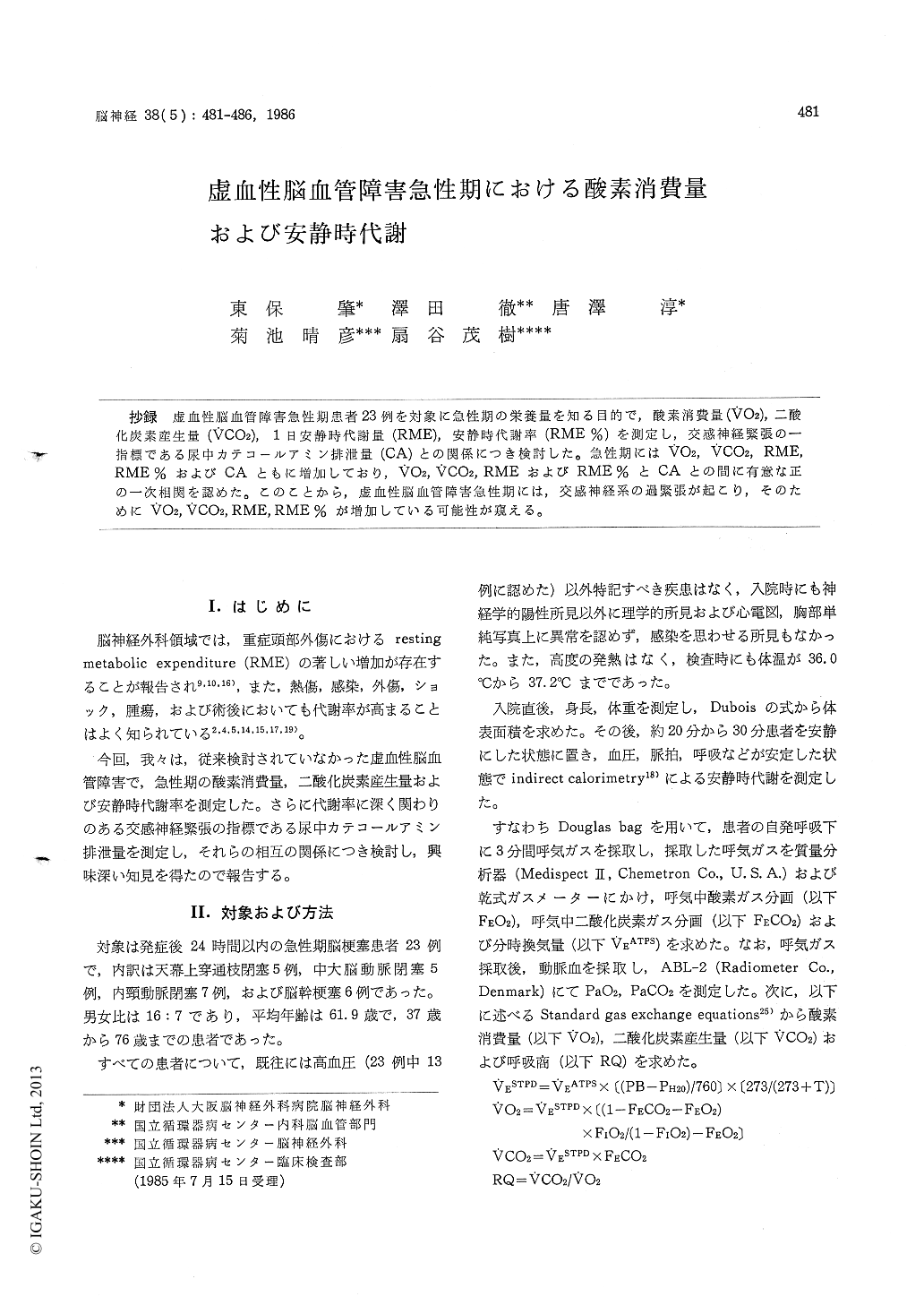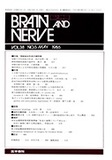Japanese
English
- 有料閲覧
- Abstract 文献概要
- 1ページ目 Look Inside
抄録 虚血性脳血管障害急性期患者23例を対象に急性期の栄養量を知る目的で,酸素消費量(VO2),二酸化炭素産生量(VCO2),1日安静時代謝量(RME),安静時代謝率(RME%)を測定し,交感神経緊張の一指標である尿中カテコールアミン排泄量(CA)との関係につき検討した。急性期にはVO2,VCO2,RME,RME%およびCAともに増加しており,VO2,VCO2,RMEおよびRME%とCAとの間に有意な正の一次相関を認めた。このことから,虚血性脳血管障害急性期には,交感神経系の過緊張が起こり,そのためにVO2,VCO2,RME,RME%が増加している可能性が窺える。
Oxygen consumption, carbon dioxide production, respiratory quotients, and resting metabolic expenditure were measured in 23 patients with cerebral infarction in their acute stage. Metabolic measurement were carried out with the technique of indirect calorimetry on their admission within two days from the onsets. At the same time, urine was collected twenty-four hours to measure urinary catecholamine excretion. Mean value of resting metabolic expenditure was 115.1% and this positively correlated with urinary catecholamine, especially noradrenaline excretion. Maximum value of resting metabolic expenditure was up to 187. 1% of that expected for an uninjured resting person of equivalent age, sex, and body surface area. Oxygen consumption and carbon dioxide production also positively correlated to urinary catecholamine excretion. On the other hand, respiratory quotients did not have any significant correlation with oxygen consumption, carbon dioxide production, resting metabolic expenditure, or urinary catecholamine excretion.
From those facts, it was implied that overactivity of sympathetic nervous system existed in their acute stage of cerebral infarction, and the overflow might directly influence oxygen consumption, carbon dixide production, and resting metabolic expenditure, and moreover we had to take into consideration of hyper-metabolic state to manage patients with ischemic cerebrovascular diseases as malnutrition might cause weight loss and immune incompetence.

Copyright © 1986, Igaku-Shoin Ltd. All rights reserved.


